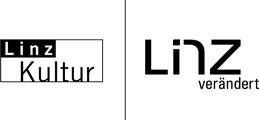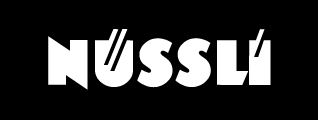Expedition NOW
The transdisciplinary international co-operation project “Expeditions into the NOW” was initiated by the kulturtankstelle of the University of Arts Linz and realised in a collaboration between the departments of Architecture, Art History & Art Theory, Visual Communication, and the Graduate Institute for Transdisciplinary Art of National Kaohsiung Normal University in Taiwan. Its start was a workshop entitled “Green Explosion” held in Linz in 2019, with international guests. A wide variety of topics were discussed, from water shortage in Taiwan to new forms of mobility and fermentation practices. But with the Corona pandemic, all projects got caught up in the turbulence of the present.
Project
WHY NOW?
Until now, intervening in the present in a transformational manner meant claiming the future as space for imagination: The possibility of using tomorrow as an open future or a scenario, allowed us to act today. Since the beginning of the pandemic, the present has become overly present. It stands in our way, blocking the visionary, dreamy look to the future. The idea for the “Expeditions into the NOW” comes out of this particular situation.
What NOW?
The coronavirus has changed our daily life, the way we work, communicate, feel, and think. Previously popular and populated meeting places – like the University of Arts Linz – are now closed, with meetings shifting to private and digital spaces.
The “NOW” drew all attention: what was happening around us, to us, between us, far away and next door? What effects would the pandemic have, what other crises did it call to mind?
Barrier tapes and separators will disappear again; already existing social boundaries, however, are being toughened, and new boundaries are being drawn. The world of yesterday is gone. Our social life, our way of communication, our understanding of closeness, and the use of public space will undergo a long-term transformation. In what direction? And how can it be influenced? What “tools” does it take to design public space in a way that enables social participation despite distance? Where in the city are communication spaces and how do they evolve when proximity holds danger? How can “reopenings” of places that comply with our NOW be initiated?
These questions formed the basis for the expeditions into the NOW. The goal was to establish the status quo, question and reorganize it, and to search for narratives to tell stories of the NOW. We did not want to get infected with viruses, but with ideas and visions.
Into the Now!
The results of these studies were shown in downtown Linz on April 30, 2021. Under the title “Into the NOW! // Towards the NOW!”, the students devised an exhibition parcours through the present. 21 interventions, performances, posters, photographs, and social sculptures exemplified efforts to grasp the NOW, to reflect on it and to test its spaces of possibility.
With the web repository and this NOW publication, historic documentation is created: people will be able to read the marks that the NOW of the pandemic has left in social spaces and in their users’ awareness
Team
An international, transdisciplinary expedition team composed of 41 students and 12 teachers investigated the NOW in four expeditions.
We set out at sunrise four times to explore the present with a specific question in mind. Using different mapping techniques, we designed temporospatial maps of the present (#1), investigated dispositives of contagion and the boundaries of closed spaces (#2), followed our own ecological footprint and questioned the notion of “neutrality“ (#3) and finally explored strolling changes and potentials of public space (#4). The ideas generated during these very different “expeditions into the NOW“ were deepened in the respective disciplines and elaborated into projects.
The format of the expeditions adapted to the current situation: While we streamed the opening session from a yawningly empty auditorium into individual group rooms, the small teams were able to meet outdoors for the second expedition. The third expedition was led from Kaohsiung so we communicated virtually; the time difference and the different phases of the pandemic (in Taiwan, it was possible to teach in presence at that time) showed the simultaneity of the non-simultaneous. Finally, at the end of the semester, everyone walked individually in predetermined directions – and compiled their individual experiences the following day via Zoom.
Four departments built a team for each expedition (workshops with students and teachers from both Austria as well and Taiwan) in order to study the present in light of a particular question.
Expedition #1 – The department of Visual Communication: “A Critical Mapping of the NOW“ used different kinds of mapping methods to examine the pluralised society and visualise it in collaborative maps.
Expedition #2 – The department of Art History & Theory examined dispositives of infection and the boundaries of closed spaces.
Expedition #3 – GITA Taiwan, The Graduate Institute for Transdisciplinary Art at the National Kaohsiung Normal University in Taiwan examined the NOW 9000 km east of Linz. This expedition was concerned with global warming and the concept of „neutrality“: What does „neutrality“ or „climate neutrality“ mean anyway?
Expedition #4 – The department of Architecture went strolling into the NOW in the spirit of Lucius Burkhart’s Strollology. Individual walks in a given direction sharpened the perception of urban space.
Supervised by
Clemens Bauder, Luana Bechstein, Huai-Wen Chang, Ludwig Engel, Tina Frank, Jasmin Mersmann, Cheng-Yu Pan, Marianne Lechner, Anne von der Heiden, Pei-Kuei Tsai, Katharina Weinberger-Lootsma, Mali Wu
Partners
Kindly supported by:
Linz Kultur, Förderverein der Kunstuniversität Linz, Nüssli, Raiffeisen Landesbank OÖ




